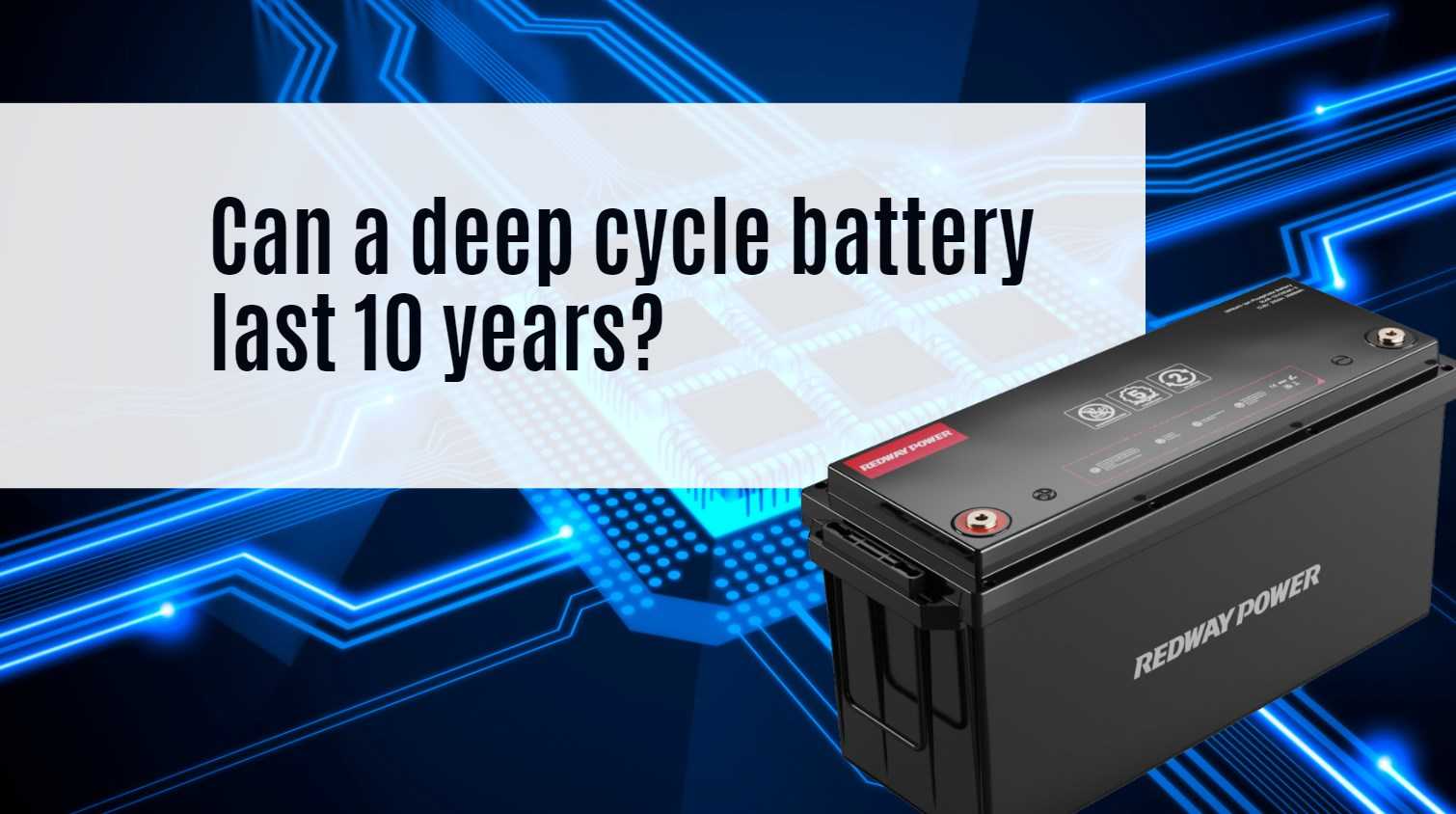Yes, a deep cycle battery can last up to 10 years, particularly if it is a lithium-ion or Lithium Iron Phosphate (LiFePO4) battery. Here’s a breakdown of the lifespan of different types of deep cycle batteries:
Lifespan by Battery Type
- Flooded Lead Acid Batteries:
- Lifespan: Up to 8 years with proper maintenance.
- Charge-Discharge Cycles: Approximately 300 to 1,000 cycles at around 50% depth of discharge.
- Gel Batteries:
- Lifespan: About 10 years on average.
- Charge-Discharge Cycles: Can deliver between 500 and 5,000 cycles, depending on depth of discharge and quality.
- Lithium-Ion Batteries:
- Lifespan: Can last up to 15 years under ideal conditions.
- Charge-Discharge Cycles: Typically offers between 2,000 and 5,000 cycles at up to 80% depth of discharge.
- LiFePO4 Batteries:
- Lifespan: Generally lasts between 10 to 15 years.
- Charge-Discharge Cycles: Can provide approximately 2,000 to 7,000 cycles, even with high depth of discharge.
Factors Affecting Lifespan
- Depth of Discharge (DoD): Regularly discharging a battery to only about 50% before recharging can significantly extend its life. Frequent full discharges can lead to capacity loss over time.
- Maintenance: Proper care, including regular checks and maintaining electrolyte levels (for flooded batteries), is crucial for longevity.
- Charging Practices: Using a quality charger and following recommended charging procedures can help maximize lifespan.
Conclusion
In summary, while the lifespan of deep cycle batteries varies by type, with proper care and usage, many can indeed last up to 10 years or more, especially lithium-based options.




